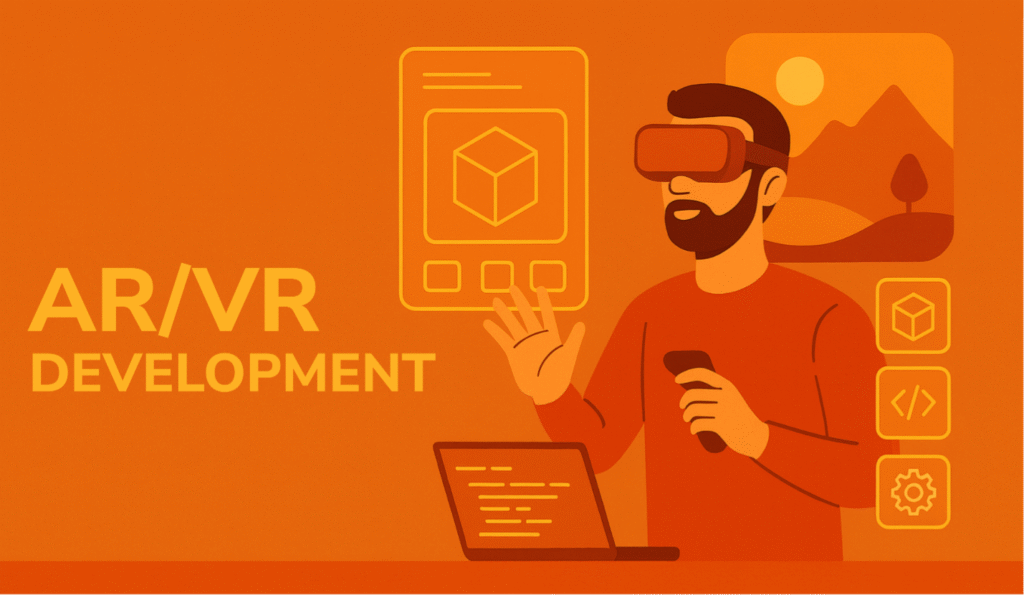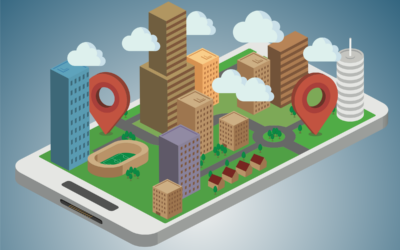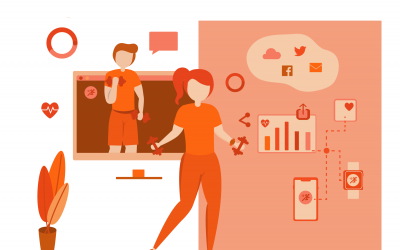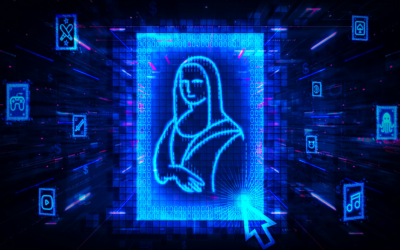Table of Content
The AR/VR landscape is advancing rapidly, with many industries shifting from early experimentation toward more enterprise-focused applications. Immersive technologies like augmented reality (AR), virtual reality (VR), and mixed reality (MR) are evolving beyond their entertainment roots and emerging as strategic tools across sectors such as consumer goods, healthcare, education, and manufacturing.
While full-scale adoption is still developing, immersive technologies are already delivering real business value in areas like enhanced product experiences, spatial collaboration, and operational efficiency.
Once considered a forward-looking experiment, AR/VR is now emerging as a tangible growth engine for innovation-driven companies. According to a report by Grand View Research, the global immersive technology market was valued at USD 40.88 billion in 2024 and is expected to grow significantly, fueled by launches like the Apple Vision Pro and Ray-Ban Meta AI glasses [1].
At the core of this evolution is a new wave of intelligence: the convergence of robotics and AI-powered world foundation models (WFMs) powering AR/VR experiences. These models give machines and immersive systems the ability to perceive, simulate, and predict dynamic 3D environments in real time—bridging digital and physical realms with unprecedented fidelity.
For business leaders, this is a timely opportunity to explore how developing AR/VR products can create new channels of engagement, unlock product innovation, and improve operational outcomes.
Key Technologies Driving AR/VR Adoption
To harness the business potential of AR/VR, organizations must understand the core technologies enabling these immersive experiences:
- Spatial Computing: Enables devices to understand and interact with 3D environments, forming the backbone of mixed reality applications
- AI-Powered Visualizations: Deep learning models now help generate hyperrealistic textures, lighting, and virtual characters that adapt dynamically to user behavior—ideal for games, training, and product experiences
- Advanced Haptics: Haptic feedback—delivered via gloves, suits, or handheld devices—adds physical sensations like touch, and pressure to virtual interactions. This sensory realism strengthens presence and emotional engagement
- Wearables & Headsets: The next generation of smart glasses and standalone VR headsets (e.g., Meta Quest 3, Snap Spectacles 5, Apple Vision Pro) deliver higher fidelity and comfort, lowering the barrier to adoption
- Content Creation Tools: Platforms like Unreal Engine and Unity, enhanced with procedural generation and AI-driven asset creation, are empowering developers to build complex immersive worlds faster and more efficiently.
AR/VR’s Expanding Role in Consumer and Enterprise Markets
While gaming and entertainment remain the most visible categories of AR/VR, the technology is gaining traction in several high-value domains:
- Consumer Goods & Toys: Companies in the toy industry are now using AR to bring iconic brands to life. For instance, immersive play experiences using augmented puzzles, interactive dolls, and mobile-driven mixed reality games are transforming how children interact with their favorite products.
- Retail & Product Visualization: Brands are using AR/VR to create virtual try-on experiences, 3D product visualizations, and personalized digital showrooms, increasing conversion and lowering return rates [2]
- Healthcare & Training: Mixed reality is enabling simulations of surgical procedures, offering trainees real-time holographic guidance during operations
- Education & Storytelling: AR-enhanced storybooks and VR classrooms are reshaping personalized learning, especially for young learners who benefit from spatial and tactile interaction.
These opportunities are amplified by the combination of artificial intelligence, real-time rendering engines, haptic devices, and wearable computing.
Platform Spotlight: Android XR
Big tech companies are accelerating their XR (extended reality) efforts. Google, for example, used its 2025 I/O event to unveiled the Android XR platform tightly integrated with its Gemini AI assistant, with XR-specific implementations still under development [3]
Google’s vision is smart glasses that work with your phone to provide contextual, hands-free help throughout the day. Prototypes shown at I/O included stylish glasses equipped with cameras, mics, speakers, and optional in-lens displays.
Paired with Google’s Gemini AI, these glasses process visual and auditory data from the user’s perspective—offering real-time language translation as subtitles in your view, turn-by-turn navigation, messaging, photography, and more via voice and gaze commands. Google and Samsung are even co-developing a reference design for Android XR glasses to help jump-start an ecosystem of third-party devices. This aligns with an industry-wide pivot toward mixed reality (MR) and smart glasses as the next frontier, blending digital information into the user’s physical world.
Examples of Immersive Experiences
Recent developments show how immersive technologies are driving real business outcomes:
- UC San Diego uses Apple Vision Pro headsets during minimally invasive surgeries (e.g., bariatric, hernia) to display laparoscope feeds, CT scans, and vitals directly in the surgeon’s field of view—reducing head movement and cognitive load. Though not FDA approved, the Vision Pro is seen as a potential future standard in surgical visualization [4].
- Collins Aerospace adopted Campfire for immersive CAD collaboration. Engineers using headsets like Varjo and Meta Quest review, annotate, and refine 3D models across distributed teams—replacing slower 2D workflows and accelerating design cycles for clients like Boeing and Airbus [5].
- LEGO Hidden Side combines physical sets with AR apps, letting children hunt virtual ghosts and explore interactive scenes. The hybrid experience increased engagement by up to 40%, demonstrating the brand value of digital-physical convergence [6].
- Barbie Dance ‘n Dream, a VR rhythm game released in late 2024, turns Synth Riders into an immersive Barbie-themed world across major headsets. Its Mixed Reality mode brings branded content into the user’s physical environment—merging spatial computing and storytelling [7].
- Ford’s Dearborn plant equips workers with Microsoft HoloLens to project real-time 3D instructions (e.g., torque specs, part placement) onto vehicles—reducing errors, streamlining training, and improving quality control on the assembly line [8].
Choosing the Right AR/VR Partner
For successful AR/VR projects, seek a development team with cross-disciplinary expertise—spanning AR/VR design, IoT integration, AI, real-time 3D rendering, and low-latency hardware. The most capable partners can merge spatial computing, advanced visualization, and responsive sensor technology to deliver immersive solutions that perform in real-world environments.
References:
[1] Immersive Technology Market Size And Share Report, 2030
[2] Immersive Technologies Help Retailers Boost Conversions and Reduce Returns
[3] A new look at how Android XR will bring Gemini to glasses and headsets
[4] Why Surgeons Are Wearing The Apple Vision Pro In Operating Rooms
[5] This tech startup wants to shake up AR — and the aerospace industry is paying attention
[6] How Lego Engages Customers Through Creative Customer Experience (CX) Strategies
[7] Mattel and Kluge Launch “Synth Riders Experience – Barbie Dance ‘n Dream”
[8] Here’s How Ford Mixed Reality Tech Helps Improve Quality












0 Comments